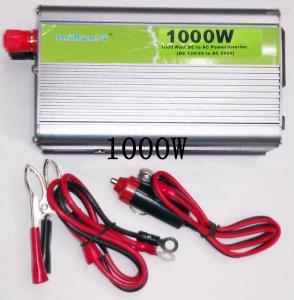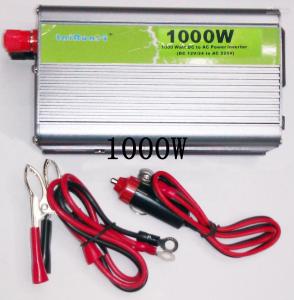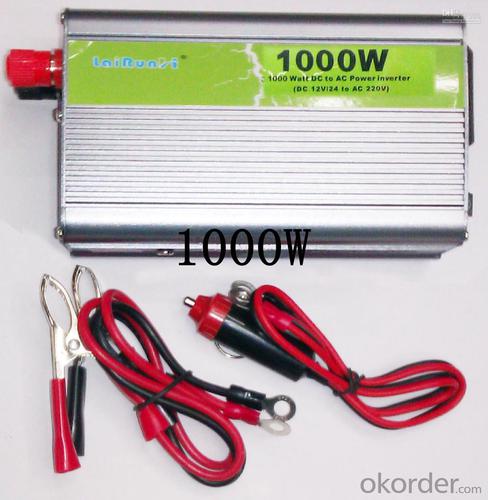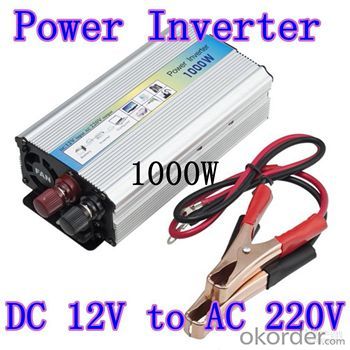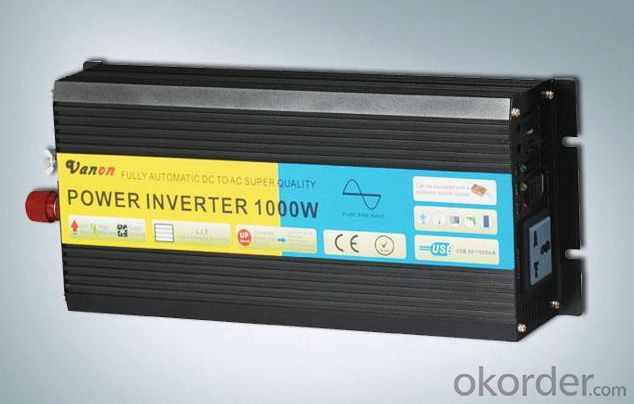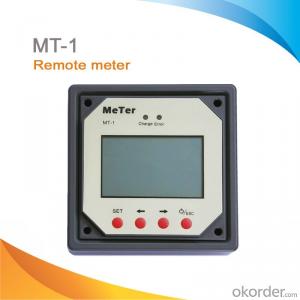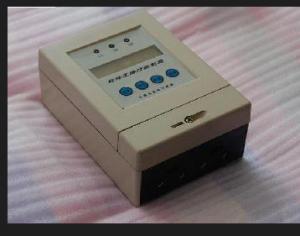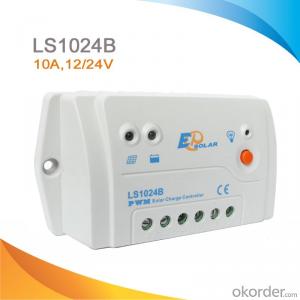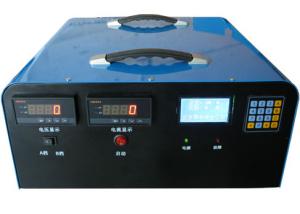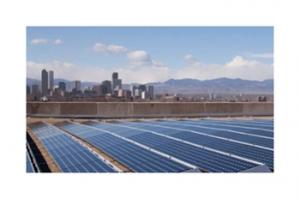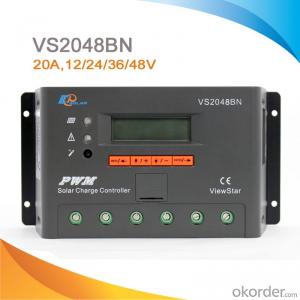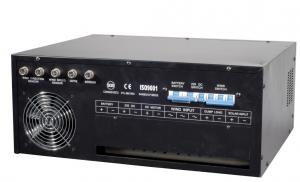Networking Solar Controllers for LS****B Series Remote Display and MT50 Remote Meter
OKorder Service Pledge
OKorder Financial Service
You Might Also Like
Descriptions:
The new generation remote meter MT50 is compatible with LS****B solar charge controller. It can monitor real-time data and status, remotely control load ON/OFF, browse and modify the control parameter, charge mode, load work mode, and inquiry failure information etc.
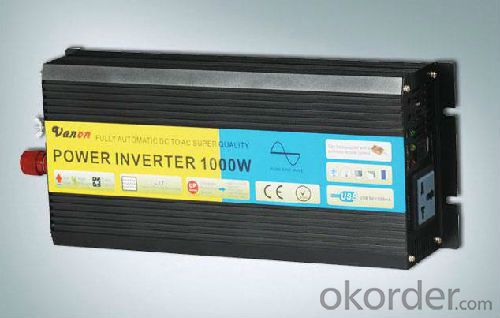

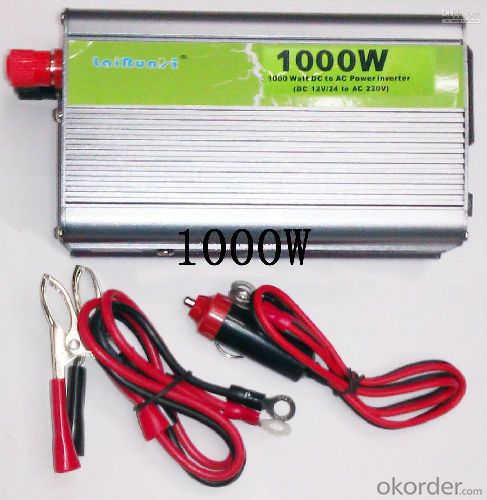
Features:
·Automatic identify the controller, and display the type, model and relevant parameter data
·Large-screen multifunction LCD displays all the operational data and system working status in digital, graphic and textual forms
·With six navigation function keys, the operation is direct, convenient and rapid
·Real-time energy statistics recording
·Both data and data flowing on the same lead ,no need for external power
·Real-time monitoring and acoustic alarm of failure information of the controller
·Longer communication distance based on RS485
More powerful function Via MT50
·Diversified load control modes : manual, light ON/OFF, Light ON+ Timer, Time Control
·Battery type selection: Gel, sealed, flooded and USER type
·Real-time monitor
·Programmable parameters
·Energy display function
Specification:
Self-consumption | Backlight and acoustic alarm on<65mA Backlight on<23mA Backlight off <15mA |
Faceplate dimensions | 98×98 mm / 3.86×3.86 in |
Frame dimensions | 114×114 mm / 4.49×4.49 in |
Connector type | RJ45 |
Meter cable | Standard 2m, max .50m |
Meter weight | 0.190 Kg |
Ambient Temperature | -20℃~+70℃/-4℉~158℉ |
- Q: Can a solar controller be used with solar-powered indoor air purification systems?
- Solar-powered indoor air purification systems can indeed utilize a solar controller. This device serves as a regulator, managing the flow of electricity from the solar panels either to a battery or directly to a load. Its primary functions involve promoting efficient battery charging by the solar panels and safeguarding against overcharging or discharging. In the context of solar-powered indoor air purification systems, the solar controller plays a critical role in optimizing solar energy usage. It establishes connections with the solar panels, battery, and air purification system. Monitoring the solar panels' power generation, the solar controller then distributes this power accordingly. It charges the battery during periods of excess sunlight and supplies power to the air purification system whenever necessary. Thanks to the inclusion of a solar controller, solar-powered indoor air purification systems can operate effectively in low sunlight conditions or during times of high demand. This integration offers a reliable and efficient means of harnessing solar energy for air purification, reducing dependence on grid electricity and promoting sustainability. In conclusion, integrating a solar controller into a solar-powered indoor air purification system enhances its overall performance, guarantees efficient solar energy utilization, and contributes to fostering a cleaner and healthier indoor environment.
- Q: Can a solar controller be used with solar panels that are connected to a solar lighting system?
- Yes, a solar controller can be used with solar panels that are connected to a solar lighting system. A solar controller, also known as a charge controller, is an essential component of a solar power system that regulates the flow of electrical energy between the solar panels, battery storage, and other devices. It helps prevent overcharging and over-discharging of the batteries, which can lead to damage and reduced lifespan. In the case of a solar lighting system, the solar controller plays a crucial role in managing the charging and discharging cycles of the batteries that store the energy generated by the solar panels during the day. It ensures that the batteries are charged optimally from the solar panels and that the stored energy is efficiently utilized for lighting purposes during nighttime. By using a solar controller, one can maximize the efficiency and lifespan of the solar lighting system by protecting the batteries from excessive voltage and current fluctuations. Additionally, some solar controllers also provide features like load control, which allows users to manage the power consumption of the lighting system and extend battery life. Therefore, incorporating a solar controller into a solar lighting system connected to solar panels is highly recommended to ensure proper and efficient operation of the system.
- Q: Can a solar controller be used in a solar-powered submarine?
- Yes, a solar controller can be used in a solar-powered submarine. A solar controller manages the flow of electricity from the solar panels to the batteries, ensuring that the batteries are charged efficiently and preventing overcharging. In a solar-powered submarine, the solar controller would be essential for regulating the power generated by the solar panels and storing it in the batteries to power the submarine's systems and propulsion.
- Q: Can a solar controller handle power surges from the charge controller?
- Yes, a solar controller can handle power surges from the charge controller. Solar controllers are designed to regulate and control the flow of power from the charge controller to the battery or load. They often have built-in protection features such as surge protection, overvoltage protection, and short circuit protection, which help prevent damage from power surges.
- Q: Can a solar controller be used with solar-powered indoor healthcare institutions?
- Yes, a solar controller can be used with solar-powered indoor healthcare institutions. A solar controller is a crucial component of a solar power system as it helps regulate the charging and discharging of batteries and controls the flow of electricity from the solar panels to the connected devices or appliances. In the case of solar-powered indoor healthcare institutions, a solar controller would play a vital role in ensuring that the solar panels are efficiently charging the batteries that power the institution's electrical systems. It would also prevent overcharging of the batteries, which can cause damage and reduce their lifespan. Moreover, a solar controller can help manage the electricity flow during periods of low sunlight or high demand. It can prioritize the use of solar energy for critical healthcare equipment and systems, ensuring uninterrupted power supply even during cloudy days or power outages. By utilizing a solar controller, solar-powered indoor healthcare institutions can effectively harness and optimize the energy generated from solar panels, reducing their reliance on traditional power sources and lowering operational costs. Additionally, solar power is a clean, renewable energy source, which aligns with the principles of sustainability and environmental responsibility commonly associated with healthcare institutions. In conclusion, a solar controller is an essential component for solar-powered indoor healthcare institutions as it helps regulate and optimize the use of solar energy, ensuring reliable and sustainable power supply to critical healthcare equipment and systems.
- Q: Can a solar controller be used with solar-powered water pumps?
- Yes, a solar controller can be used with solar-powered water pumps. A solar controller helps regulate the flow of electricity from the solar panels to the water pump, ensuring efficient and optimal operation of the pump. It can also protect the pump from damage caused by overvoltage or other electrical issues.
- Q: How does a solar controller handle battery reverse polarity protection?
- A solar controller handles battery reverse polarity protection by incorporating built-in circuitry that prevents the flow of current to the battery in case it is connected with the wrong polarity. This protection mechanism ensures the safety of the battery and the solar controller by preventing potential damage caused by reverse polarity.
- Q: Can a solar controller be used with solar-powered outdoor recreational equipment?
- Yes, a solar controller can be used with solar-powered outdoor recreational equipment. A solar controller helps regulate the charging and discharging of batteries in solar-powered systems, including outdoor recreational equipment such as solar-powered lights, camping gear, or portable speakers. It ensures that the batteries are charged efficiently and protected from overcharging or discharging, thereby optimizing the performance and lifespan of the equipment.
- Q: Can a solar controller be used with solar panels of different forms?
- Solar panels of different forms can indeed be used with a solar controller. The purpose of a solar controller is to regulate the charging process of a solar panel system and safeguard the batteries against overcharging or overdischarging. It is compatible with various types of solar panels, such as monocrystalline, polycrystalline, and thin-film panels. The principal function of the controller is to align the voltage and current output of the solar panels with the requirements of the batteries. Consequently, as long as the solar panels fall within the voltage and current range supported by the solar controller, they can be utilized together, irrespective of their form or type.
- Q: Can a solar controller be used with solar panels that are mounted on a moving vehicle?
- Yes, a solar controller can be used with solar panels that are mounted on a moving vehicle. The solar controller regulates and optimizes the charging process of the batteries connected to the solar panels, regardless of whether they are stationary or in motion. It ensures that the batteries receive the appropriate voltage and current from the solar panels, maximizing their charging efficiency and protecting them from overcharging or damage.
Send your message to us
Networking Solar Controllers for LS****B Series Remote Display and MT50 Remote Meter
OKorder Service Pledge
OKorder Financial Service
Similar products
Hot products
Hot Searches
Related keywords
